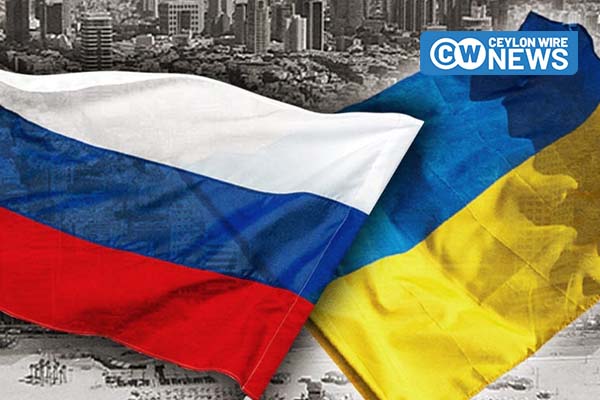The Russian invasion of Ukraine in early 2022 has garnered global attention, with many witnessing Russian leader Vladimir Putin ordering military actions against Ukraine, its leadership, and its citizens. This essay analyzes the event through the theoretical lens of international relations, using the main theories of realism, liberalism, and constructivism. The first part explains Russia’s invasion of Ukraine, employing realism and constructivism theories. The second part, focusing on the response of Western countries, utilizes liberalism and realism theories.
To elucidate Russia’s invasion of Ukraine, two relevant international relations theories come into play. The first is realism, which posits that the state is the primary actor. Realism views the world as anarchic, lacking a centralized international authority, and nations must defend their interests using their material power in the form of military or economic strength. Realists argue that conflicts between states are inevitable, serving as the primary mechanism for political change. This perspective is influenced by the egotistical nature of those governing the state, known as human nature realism. Past wars demonstrate that aggressive and power-hungry leaders exploit various factors, such as economic, religious, ethnic, and political issues, to wage war (Howarth, 1916; Jackson and Morelli, 2009; Oldemeinen, 2010).
Considering these elements, it can be argued that Russia’s invasion of Ukraine was predictable, given their shared history in the Soviet Union. In 1954, Soviet leader Nikita Khrushchev transferred Crimea, with its majority ethnic Russian population, from the Russian Soviet Federative Socialist Republic to the Ukrainian Soviet Socialist Republic. This transfer increased the Russian population in Ukraine, reaching 22% by 2001. Following the Soviet Union’s dissolution, questions arose about Crimea’s status and the position of the ethnic Russian community in Ukraine (Bebler, 2015). Tensions escalated in 2014 after the overthrow of Ukrainian President Viktor Yanukovych, leading to separatist movements in Crimea and the Donbas region. The Russian government supported these movements, sending forces under the pretext of protecting ethnic Russians. Many speculate that Putin’s motive to increase influence played a role in Russia’s involvement in the Ukrainian crisis (Young, 2022).
Considering these factors, the conflict between Russia and Ukraine seems inevitable. The agitation within the ethnic Russian community served as a racial and political catalyst that Putin exploited for his expansionist political ambitions. Under the pretext of defending ethnic Russians, Putin deployed troops to Crimea and the Donbas, laying the groundwork for the eventual invasion of Ukraine with the goal of establishing a pro-Russian regime to wield political influence—a distinct manifestation of human nature realism..
From a realist perspective, another aspect is the Russians’ concern over the threat to their security. This aligns with the defensive realist position, a variation of the realism theory that posits that a state takes action due to discontent with the international political status quo to maintain a balance of power. Applying this to Russia’s actions, it can be argued that the Russian leadership resented the international system, particularly the recent advancements made by the military alliance NATO.
Since the end of the Cold War, NATO has expanded eastwards, welcoming fourteen new member countries. Recently, there has been speculation about Ukraine potentially joining the alliance (Kirby, 2022). For Russia, maintaining a sphere of influence in the post-Soviet era is crucial, involving close economic and political ties with former communist constituents. However, NATO’s expansion has diminished the likelihood of realizing this goal. As many former Eastern Bloc states joined the alliance, Russia found itself less capable of exerting influence over them. Ukraine, in particular, is considered a red line that NATO should not cross, as it would be perceived as a direct threat by Russia (Sauvage, 2022; Saranya, 2022). In the eyes of Russian leadership, NATO’s expansion makes them more vulnerable and less powerful. To counter this, they saw the need to prevent Ukraine from joining NATO, and the use of force was seen as the most effective way to achieve this goal. The move has had some success, as NATO has become hesitant about admitting Ukraine, with President Volodymyr Zelensky acknowledging that Ukraine will no longer seek membership in the organization (Wong and Jakes, 2022; Koshiw, 2022).
The motivation behind Russia’s invasion of Ukraine is consistent with the defensive realism perspective. The concern is that if Ukraine were to join NATO during the conflict, NATO would be obligated to defend Ukraine, potentially escalating into direct conflict with Russia—a scenario Russia aims to avoid. Consequently, invading Ukraine was seen as the most effective strategy to hinder NATO’s expansion and uphold the balance of power.
A third relevant perspective in explaining Russia’s invasion of Ukraine is constructivism. Unlike realism and liberalism, constructivism is rooted in the idea that the world is socially constructed and constantly evolving based on actors’ beliefs and views. In the aftermath of the Cold War, constructivism emerged as a social theory in international relations. Applying this to the crisis, it is evident that Russian President Vladimir Putin holds constructed views about his country and Ukraine. He perceives the Ukrainian people as ethnically and culturally similar to Russians, going so far as to deny the legitimacy of the Ukrainian state. Putin claims that Ukraine is not a genuine country and only came into existence after the Soviet Union’s collapse, asserting that it was always part of Russia (Yekelchyk, 2022). Putin’s narrative suggests that both countries are one, and the invasion is framed as a mission to rectify the perceived injustice of Ukraine existing independently from the Russian Federation and bring it back to what he considers its rightful place.
The response of Western countries, including the United States and other European states, to the Russian invasion of Ukraine has been notably robust. In the realm of international relations, two schools of thought can be employed to comprehend their actions. The first is liberalism, which optimistically views the world, rejecting the inevitability of war and advocating for the protection of individual rights and freedoms, the centrality of democracy in society, and the enhancement of multinational cooperation through international institutions and frameworks (Jumarang, 2011; Meiser, 2018). Of particular relevance is the interdependent nature of states in economic activities, where trade agreements facilitate the exchange of goods, services, and finances. This interdependence offers an alternative to military action, such as the implementation of economic sanctions. Western countries, including the United States, the United Kingdom, and many European nations, have imposed sanctions on Russian banks, businesses, and politicians, restricting their financial assets, investments, and trade activities (Toh et al., 2022). This approach aims to isolate Russia and inflict adverse effects on its economy, with the expectation that such pressures will influence the Russian leadership to withdraw from Ukraine or potentially prompt its citizens to rebel against their government due to the constraints and frustrations imposed by the sanctions.
The second theory providing insight into the Western response is realism, specifically defensive realism. Countries, disenchanted with the international political system, vie for power to maintain a balance of power (Feng and Ruizhuang, 2006). Aggressive actions by one state may trigger defensive measures by others, not only to enhance their sense of security but also to curb the powers of the aggressor. This perspective aligns with the way Western countries reacted to the Ukrainian crisis. Following the invasion, seven European countries increased their military spending, and proposals from countries like Sweden and Finland to join NATO emerged (Mackenzie, 2022; Deni, 2022). The heightened military spending and aspirations to join NATO in response to the invasion reflect the concerns held by European states regarding the potential threat posed by Russia’s aggression. These measures are seen as efforts to maintain a balance of power in the region.
In conclusion, analyzing the Russian invasion of Ukraine and the subsequent Western response through the lens of three international relations theories reveals the nuanced complexities of the crisis. The defensive realist and constructivist theories explain how the crisis developed over time, shaped by Putin’s personal beliefs about the connection between Russia and Ukraine. On the other hand, the liberal concept of economic interconnectedness enables Western nations to impose sanctions on Russia. Meanwhile, the defensive realist perspective highlights the increase in military spending and proposals to join NATO as strategies employed by European countries to counter Russia’s expansionist aggression and maintain a balance of power in the region.
South-South Research Initiative
References
- Antunes, S. and Camisao, I., 2018. Introducing Realism in International Relations Theory. [online] E-ir.info. Available at: https://www.e-ir.info/pdf/72860 [Accessed 7 May 2022].
- Bebler, A., 2015. THE RUSSIAN-UKRAINIAN CONFLICT OVER CRIMEA. Teorija in Praksa, [online] 52(1/2), pp.196-219,307. Available at: https://www.proquest.com/pq1academic/docview/1691584669/AD9C09B09D754FDEPQ/8?accountid=28103 [Accessed 9 May 2022].
- Bengtsson, M., 2002. Economic Sanctions Go Smart. [online] Diva-portal.org. Available at: https://www.diva-portal.org/smash/get/diva2:18527/FULLTEXT01.pdf [Accessed 10 May 2022].
- Deni, J., 2022. NATO Should Admit Finland and Sweden ASAP. [online] wsj.com. Available at: https://www.wsj.com/articles/nato-should-admit-finland-and-sweden-asap-ally-border-russia-ukraine-war-article-five-11652036687 [Accessed 11 May 2022].
- Feng, L. and Ruizhuang, Z., 2006. The Typologies of Realism. Chinese Journal of International Politics, [online] 1, pp.109–134. Available at: https://edisciplinas.usp.br/pluginfile.php/5452897/mod_resource/content/1/Typologies%20of%20Realism.pdf [Accessed 10 May 2022].
- Fischer, S., 2019. The Donbas conflict: opposing interests and narratives, difficult peace process. [online] Ssoar.info. Available at: https://www.ssoar.info/ssoar/handle/document/62708 [Accessed 9 May 2022].
- Globe, P., 2015. Russian national identity and the Ukrainian crisis. Communist and Post-Communist Studies, [online] 30, pp.1-7. Available at: http://Russian national identity and the Ukrainian crisis (krytyka.com) [Accessed 13 May 2022].
- Howarth, I., 1916. The Causes of War. The Scientific Monthly, [online] 2(2), pp.118-124. Available at: https://www-jstor-org.ezproxy.usp.ac.fj/stable/pdf/6227.pdf?refreqid=fastly-default%3A4ddba4cf994abf5e9ccb4b1735a9bd9a&ab_segments=0%2Fbasic_search_gsv2%2Fcontrol&origin=search-results [Accessed 9 May 2022].
- Jackson, M. and Morelli, M., 2009. The Reasons for Wars – an Updated Survey. [online] Web.stanford.edu. Available at: https://web.stanford.edu/~jacksonm/war-overview.pdf [Accessed 9 May 2022].
- Jumarang, B., 2011. Realism and Liberalism in International Relations. [online] E-ir.info. Available at: https://www.e-ir.info/pdf/10069 [Accessed 7 May 2022].
- Kirby, P., 2022. Why has Russia invaded Ukraine and what does Putin want?. [online] BBC News. Available at: https://www.bbc.com/news/world-europe-56720589 [Accessed 10 May 2022].
- Koshiw, I., 2022. Ukraine will not join Nato, says Zelenskiy, as shelling of Kyiv continues. [online] the Guardian. Available at: https://www.theguardian.com/world/2022/mar/15/kyiv-facing-dangerous-moment-amid-signs-of-russias-tightening-grip [Accessed 13 May 2022].
- Lobell, S., 2017. Structural Realism/Offensive and Defensive Realism. [online] Oxfordre.com. Available at: https://oxfordre.com/internationalstudies/view/10.1093/acrefore/9780190846626.001.0001/acrefore-9780190846626-e-304?print=pdf [Accessed 13 May 2022].
- Mackenzie, C., 2022. Seven European nations have increased defense budgets in one month. Who will be next? – Breaking Defense. [online] Breaking Defense. Available at: https://breakingdefense.com/2022/03/seven-european-nations-have-increased-defense-budgets-in-one-month-who-will-be-next/ [Accessed 11 May 2022].
- Mankoff, J., 2022. Russia’s War in Ukraine: Identity, History, and Conflict. [online] Csis.org. Available at: https://www.csis.org/analysis/russias-war-ukraine-identity-history-and-conflict [Accessed 14 May 2022].









